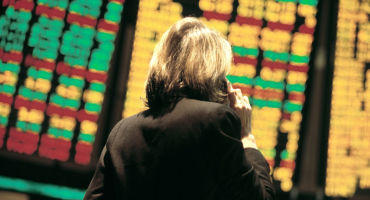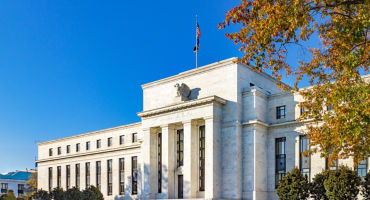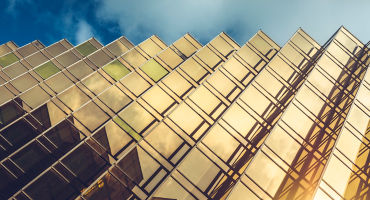- Macro Strategist
Skip to main content
- Funds
- Insights
- Capabilities
- About Us
- My Account
The views expressed are those of the author at the time of writing. Other teams may hold different views and make different investment decisions. The value of your investment may become worth more or less than at the time of original investment. While any third-party data used is considered reliable, its accuracy is not guaranteed. For professional, institutional, or accredited investors only.
With divided government in the US sure to limit the prospects for new legislation, trade policy is likely to be a key area of focus for the Biden administration over the next two years. At the annual meeting of the National Association for Business Economics in October, I had the opportunity to speak with US Trade Representative Katherine Tai and I came away with five conclusions that encapsulate shifting US trade priorities and could have important economic implications.
1. Free-trade agreements concerned solely with liberalization and tariff elimination are history. Instead, the pillars of the Indo-Pacific Economic Framework, launched in 2022, would seem to be a better indication of the new direction of US trade policy: Along with the traditional trade pillar (in this case, focused on the digital economy), the stated priorities include supply chains, infrastructure, decarbonization, and governance. The last includes effective tax and anticorruption policies as its goals. This innovative framework brings together 14 nations, representing 40% of global GDP and 60% of the world population. I will be keeping an eye on how this evolves in 2023, especially as the US tries to reposition its trade footprint in Asia away from China.
2. The decoupling of the US and China will remain top of mind. Acknowledging that the two countries are in competition with each other, Ambassador Tai explained the use of Section 301 tariffs as a tool for level-setting the policy field. This tool would serve to facilitate the strategic realignment of priorities given the buildup of issues around intellectual property, innovation, and technology transfers with China over time, suggesting less room to maneuver in bringing these tariffs meaningfully lower. The review of these tariffs is ongoing, and the public has been given the chance to weigh in. I would expect to hear a lot more on this issue, perhaps early in 2023 now that the mid-term elections are behind us.
3. Trade policy is now more focused on standards and not strictly on market access. The Biden trade agenda includes goals related to sustainability, inclusion, and resiliency. This administration has found allies in Europe for sustainability and inclusion goals and in emerging markets for goals related to inclusion, as well as investments required for the rerouting of supply chains and the buildout of infrastructure. The US/EU Trade and Technology Council, launched in 2021 to enhance competitiveness, fosters collaboration with allies on issues like labor and the environment, which are critical to sustainable trade policy.
4. US trade policy could now serve as a complement to US industrial policy. This means the costs of past trade liberalization efforts, such as fragile supply chains, de-industrialization, offshoring, and the decimation of manufacturing communities, would be considered as a counterbalance to market access. As industrial policy rebalances, trade policy, which sits at the nexus of domestic and foreign policy, also adapts. Note how the pillars of the Indo-Pacific Economic Framework encompass the goals of sustainability, inclusion, and resiliency, which also drove the passage of the CHIPS Act, the Infrastructure bill, and the Inflation Reduction Act (US industrial policy).
5. Enforcing trade rules is an area of focus for the administration. Since the passage of the US/Mexico/Canada Agreement (USMCA), more legal cases have been brought up to ensure that the letter of the law is followed in practice. Recall that the USMCA includes both labor and environmental protection clauses. We’re likely to see similar scrutiny around deals with the rest of the world.
Expert

The spending bubble driving corporate profits looks set to burst
Continue readingOil: The real influencer in the Venezuela intervention
Continue readingGeopolitics in 2026: Risks and opportunities we’re watching
Continue readingURL References
Related Insights

The spending bubble driving corporate profits looks set to burst
US corporate profits have been fueled by government deficits, low rates, and consumption — drivers now at risk, raising questions about the sustainability of market valuations.

Oil: The real influencer in the Venezuela intervention
Multi-asset Strategist Nanette Abuhoff Jacobson details the role of oil in the recent events in Venezuela and shares the investment implications.

Geopolitics in 2026: Risks and opportunities we’re watching
Geopolitical Strategist Thomas Mucha shares his outlook, highlighting conflicts to watch, the importance of national security, and investment opportunities.

Monthly Market Review — November 2025
A monthly update on equity, fixed income, currency, and commodity markets.

FOMC: Easing into uncertainty
Fixed Income Portfolio Manager Jeremy Forster profiles the Fed's December rate cut, labor market trends, inflation pressures, and the role of anticipated changes to FOMC leaders in 2026.

Private credit outlook for 2026: 5 key trends
Our private credit experts discuss five themes driving the asset class’s 2026 outlook, including public/private convergence, changing credit profiles, the growth of retail, and much more.

The rising tide of AI: How it could lift US productivity, growth, and profits
From an economic and market standpoint, a lot is riding on the future of artificial intelligence. Macro Strategist Juhi Dhawan sees plenty of reasons for excitement but also a need for patience along the way.

Are hedge funds the missing ingredient?
Inflation, volatility, and valuations — they all raise questions about portfolio diversification and resilience. Multi-Asset Strategists Nanette Abuhoff Jacobson and Adam Berger explain why multi-strategy and equity long/short hedge funds could provide the answers. They offer insights on adding allocations to a traditional portfolio mix and a recipe for manager selection.

Rapid Fire Questions with Ross Dilkes
In this edition of “Rapid Fire Questions,” fixed income portfolio manager Ross Dilkes shares his views on the Asia credit market—covering the macro outlook, China’s momentum, the most compelling opportunities across the region, and key risks shaping the next 12 months.

Investing in 2026: prepare for inflationary growth
Macro Strategists John Butler and Eoin O'Callaghan share their annual macro outlook and discuss likely implications for markets and investors. They outline four potential scenarios graded by level of probability.

Is all that glitters still gold?
Gold has delivered impressive gains thus far in 2025, but what does that say about market risks and the recent strong returns of stocks? Multi-Asset Strategist Nanette Abuhoff Jacobson offers her take on the precious metal and the case for diversification in today’s market.
URL References
Related Insights
Monthly Market Review — November 2025
Continue readingBy